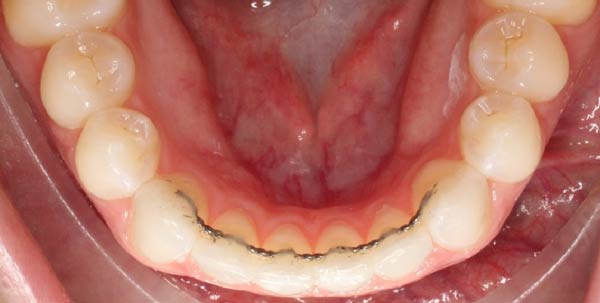At Dr. Doug Orthodontics, we provide all patients with retention options to ensure your smiles last a lifetime! Not only do we routinely provide our patients with backup retainers (hey, stuff happens and we understand that!) but we have the final result of your perfect teeth saved on the cloud! That means one call to the office and we can have another set of retainers made ASAP without an office visit!
Removable Retention
All our retainers are made from a digital scan (yup, no gooey impressions… ever!) and 3-D printing technology. Removable retainers come in 2 types and are worn full-time for a short time after treatment is completed. Nightly wear long-term is recommended to maintain your smile.
“VIVID” Clear Retainers
These are our standard retainers at the end of comprehensive treatment. While most offices provide you with one retainer per arch, we provide all patients with a 2nd to keep that smile beautiful for years to come! VIVID brand retainers are made of the most durable yet flexible material in the market today. The retainers are to be worn full-time for 2 weeks when treatment is completed. After that, nightly wear long-term is needed.

Hawley Retainers
Hawley style retainers are commonly used after phase I (early) treatment with younger children. They are custom with acrylic and wire on a 3D printed model of the patient’s teeth. Hawley retainers can be custom designed to match the patient’s personality and style! We have hundreds of designs to choose from, making this an exciting part of a children’s treatment. Another benefit of these retainers is the ability to adjust them as children transition from baby teeth to adult teeth. Instructions are typically to wear full time for 1-2 months, then nightly thereafter.
How to Care for Removable Retainers
- Clear Retainers are made of a thermoplastic material that is sensitive to excessive heat, so they should be kept away from heaters, dishwashers, car dashboards or any place where the temperatures can exceed 115 degrees (Fº).
- Retainers should be kept in the proper retainer case when they are not in the patient’s mouth; never place them in a napkin or tissue when eating. This is to prevent the retainers from accidentally being thrown out.
- Keep away from any family pets, as they like to chew on them.
- Clean your retainers daily. The material used for fabrication is slightly porous, therefore, plaque tends to cling to the surfaces. Gentle scrubbing with a toothbrush and a mild liquid soap will remove the plaque. A denture cleaning solution, such as Efferdent, will aid in the removal of plaque and tartar if needed. Be sure to rinse the retainers thoroughly after cleaning them to remove any cleanser residue.
Because retainers are worn for years, they will need periodic replacement. Unlike most practices, we provide you with 2 clear retainers after comprehensive treatment. The retainers each have an expected lifespan of 18-24 months under normal use and proper care. If the retainers are lost or damaged, there will be a charge for replacements. If the retainers become loose or broken, contact our office immediately.
Fixed (Bonded) Retainers
Fixed retainers are the preferred retainer for the lower teeth. Since lower incisor teeth are inherently the most unstable teeth in the mouth, fixed retention is ideal to prevent relapse or age-related crowding later in life. As we age, crowding of the lower front teeth is as normal as wrinkles on your skin or grey hair on your head. This tends to happen whether an individual had orthodontic treatment or not. A fixed retainer is the best way to prevent this from happening as no patient compliance is needed. All patients are instructed and encouraged to use floss threaders to properly clear under this retainer and must have routine cleanings at 6 month intervals with their general dentist. Fixed retainers are used on the upper teeth sparingly since a normal bite may cause you to hit the retainer when you bite/chew. Patients who significantly demonstrate poor oral hygiene may not be a candidate for fixed retention.

Dental Examinations and Cleanings
The patient should continue with proper oral hygiene procedures at home, to include thorough brushing and flossing techniques. His or her family dentist should see the patient at least every six months for cleaning and dental examinations during and after orthodontic treatment.


